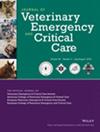RECOVER Guidelines: Newborn Resuscitation in Dogs and Cats. Evidence and Knowledge Gap Analysis With Treatment Recommendations
Abstract
Objective
To systematically review the evidence on, to devise clinical recommendations for, and to identify critical knowledge gaps in resuscitation of newborn puppies and kittens.
Design
Standardized, systematic evaluation of literature pertinent to newborn resuscitation following Grading of Recommendations, Assessment, Development, and Evaluation (GRADE) methodology. Prioritized questions were reviewed by Evidence Evaluators, and findings were reconciled by Domain Chairs and Reassessment Campaign on Veterinary Resuscitation (RECOVER) Co-Chairs to arrive at treatment recommendations commensurate with the quality of evidence, risk–benefit relationship, and clinical feasibility. This process was implemented using an evidence profile worksheet for each question that included an introduction, consensus on science, treatment recommendations, justification for these recommendations, and important knowledge gaps. Treatment recommendations underwent a modified Delphi consensus process and were then distributed to veterinary professionals for comment for 2 weeks prior to finalization.
Setting
Transdisciplinary, international collaboration in university, specialty, and emergency veterinary practice.
Results
Twenty-eight questions pertaining to temperature management, respiratory and metabolic support, and CPR were addressed. Of the 59 treatment recommendations formulated, 21 concerned medications, 20 addressed respiratory measures, 20 provided guidance on CPR, and 3 related to temperature management. Taken together, the recommendations emphasize the importance of early administration of bag–mask ventilation in nonvigorous, severely bradycardic newborn puppies and kittens. Most recommendations are either expert opinion (n = 28) or based on very low quality of evidence (n = 26).
Conclusions
Significant uncertainty remains regarding most resuscitative interventions in newborn puppies and kittens at birth. However, through a comprehensive evaluation of the evidence and a consensus process that included considerations of feasibility, the resulting treatment recommendations lay the foundation for clear, actionable guidance in small animal newborn resuscitation. In addition, a list of prioritized knowledge gaps was identified to guide collaborative clinical research to overcome the significant lack of veterinary scientific data at present.


 求助内容:
求助内容: 应助结果提醒方式:
应助结果提醒方式:


